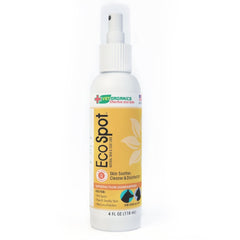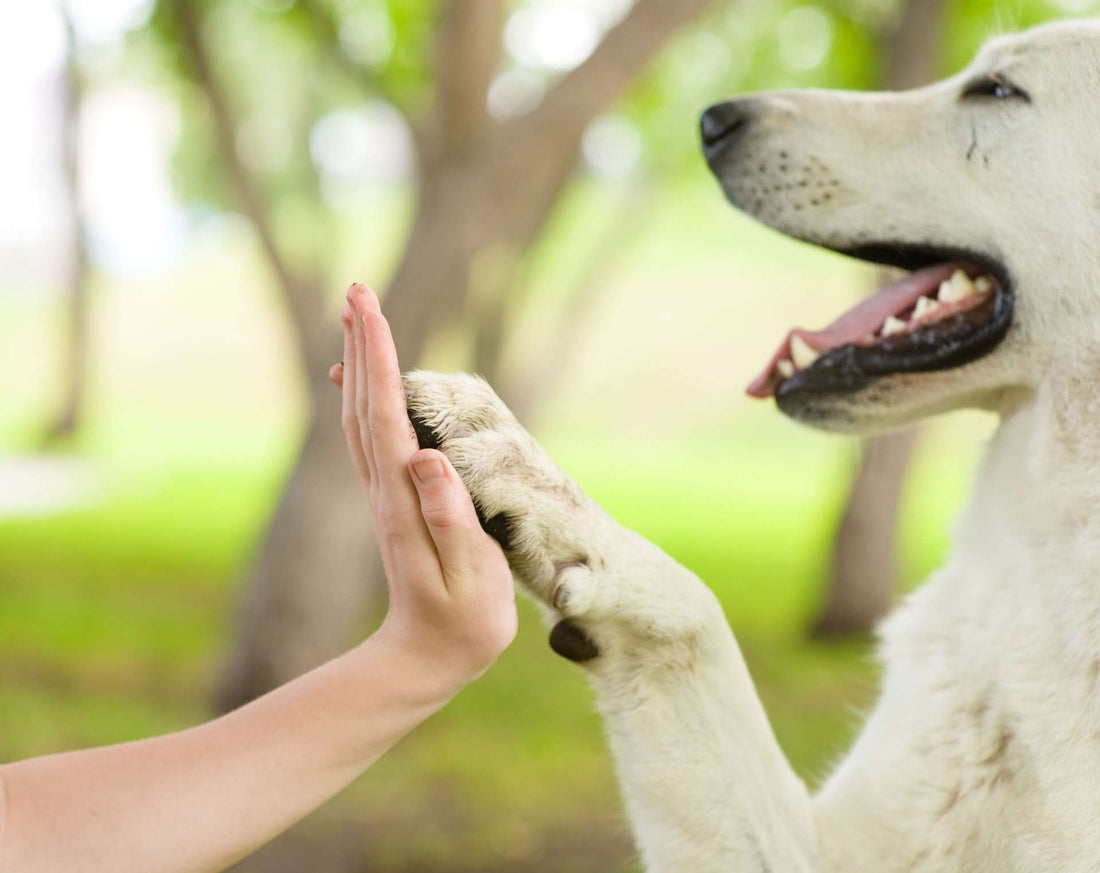There’s more to dog paws than their cuteness, leathery texture, and corn chip smell. Paws help dogs traverse their environment and even protect them from overheating and picking up bacteria. Today we’ll delve into what makes dog paws so special, and we’ll even get into some of the more unusual facts and care tips so you’ll know all about them, too.
Paws 101
In order to fully understand dog paws, we first need to get down to the structural basics. There are five distinct parts of a dog’s paw:

- A) the nails, or claws
- B) the 4 digital pads
- C) the metacarpal pad
- D) the dewclaw digit
- E) the carpal pad
(Photo credit: Amos T Fairchild, CC BY-SA 3.0)
1.the nails, or claws
The claw, or nails are beak-like in their shape. They are made of thick keratin, just like human hair and nails. Each claw is used for traction, digging, and grasping. At their center, they have a sensitive quick, so we have to be extra careful when trimming their nails. Taking our dogs on daily walks will help keep nails worn and healthy, allowing us to trim their nails and put them at risk less often.
2. The Four Digital Pads
Digital pads are the leathery parts directly under the dog’s toes that leave those iconic pawprints. Dogs have four digital pads per limb, but cats and other animals have five or more. They are made of epidermis, an outer skin that’s similar to the thick skin on the soles of our feet. They contain fatty tissue which doesn’t freeze as quickly as the rest of the body, making them ideal for withstanding the cold, ice, and snow for limited periods of time.
3.the metacarpal pad
If the digital pads are considered the equivalent to our human toes and fingers, the heart-shaped metacarpal pad is comparable to our humans soles and palms. Technically, they’re called the metacarpal pads when referring to the front paws, and metatarsal pads when referring to the rear legs. Like good walking sneakers, these pads help to cushion their paws.
![Elf at the English language Wikipedia [GFDL (http://www.gnu.org/copyleft/fdl.html) or CC-BY-SA-3.0 (http://creativecommons.org/licenses/by-sa/3.0/)], via Wikimedia Commons](https://cdn.shopify.com/s/files/1/2611/1722/files/DogDewClawJake1_wb_medium.jpg?1698831425082942576)
The dewclaw shown here is the dark nail that does not make contact with the ground (Image by Elf, CC-BY-SA-3.0)
4.the dewclaw digit
The official name for that solitary nail situated higher on the leg is the dewclaw, or the vestigial toe. Basically, it’s a digit that’s no longer used. Dewclaws aren’t used for walking and most breeds don’t even let them touch the ground, that is unless your dog is a hard working breed such as a Border Collie, or actively running at top speeds to herd sheep or cows. In these cases, the dewclaw prevents the leg from turning, which may prevent arthritis or sports-related injuries.
5.The carpal pad
The carpal pad is that stand alone gumdrop-shaped pad located higher up the leg with the dewclaw. Just like the dewclaw, the carpal pads aren’t used as load-bearing cushions. Instead they provide traction for abrupt stopping when hunting or herding.
Size And Shape Matter

"Cat Feet" refer to compact paw shape, above left. Illustration from fascinating article at www.watercubs.com.
Dogs with large paws are generally from colder climates. Their larger footprint acts like a snowshoe when they travel over frozen terrain. Breeds characteristic of large paws are St. Bernards, Newfoundlands, and Labrador Retrievers.
“Cat Feet,” a term of affection referring to dogs with a short third digit, means they make paw prints that look rounded, like a cat’s paw print. Breeds that fall into this category are not particularly small and include Doberman Pinschers, Akitas, Giant Schnauzers, and many terriers.
Certain breeds of dogs even have webbed feet. They are not as pronounced as a duck’s, but they serve the same purpose: to speed through the water with ease. Dogs with these paws are excellent swimmers. Newfoundlands, Chesapeake Bay Retrievers, Portuguese Water Dogs, Spaniels, and German Shorthair Pointers all have webbed feet.
Fun Fact

CORN CHIP SMELL
Many pet owners believe that their dog’s paws smell like corn chips or popcorn— and no, they’re not crazy.
This familiar smell is actually caused by the naturally occurring bacteria on your pet’s paws, namely Proteus or Pseudomonas. These are the textbook bacteria that show up just about everywhere including plants, soil, water, and even in humans. They’ve also been discovered in clouds and ice crystals that are millions of years old.
When pseudomonas grows on rotting foods, it gives off a fruity odor. When it grows on your dog’s paws, it gives off an odor people often recognize as smelling similar to corn chips or the scent yeast gives off when we’re making bread.
While a hint of this smell is normal, a strong scent can indicate a yeast infection that need attention and treatment.
Take these steps if you notice a strong smell on your pup’s paws:
- First, always make sure your pet’s paws are kept clean. When bathing your dog, make sure to scrub in between each and every toe with warm sudsy water. Thoroughly dry in between each and every toe as well.
- While your dog’s paws are padded to insulate against cold, city sidewalks may have salt in the winter, which should be removed after a walk.
- To cut down on the bacteria that causes this smell, keep the hair between the toes trimmed to lessen the surface area that the bacteria can linger on, and to promote good air circulation.
- Remember, dogs constantly step in dirt, which may contain trace amounts of feces, urine, chemicals from lawn care pesticides, and salt in icy conditions.
- Gently wash your dog’s feet with a dog-friendly soap, and then rinse thoroughly after each walk.

Epsom Salts are generally available at your local drug store.
TREATING SMELLY PAWS
The following recipes and remedies will be helpful and should not be washed off after treatment:
- Add 1–2 tablespoons of baking soda to one gallon of water to remove allergens that irritate the paws. Let your dog stand in the mixture for about two minutes or so.
- OR, add 1 cup of Epsom salt to your dog’s bath and in just 10 minutes your pet’s natural pH balance will be back to normal.
- OR, soak your dog’s paws in 1 cup of organic, unpasteurized, filtered apple cider vinegar and a few drops of peppermint oil for 10 minutes to help alleviate irritation.
- Spray paws with an all- natural antibacterial product for pets, such as EcoSpot. EcoSpot is a natural disinfectant and provides fast relief for a wide variety of skin conditions that cause irritation.

Further Reading
- "Top Dog Paw Care Tips," WebMD
- "Interesting Dog Paw Facts," Unleashed
- "Everything You Need To Know About Dog Paws," Dogster


